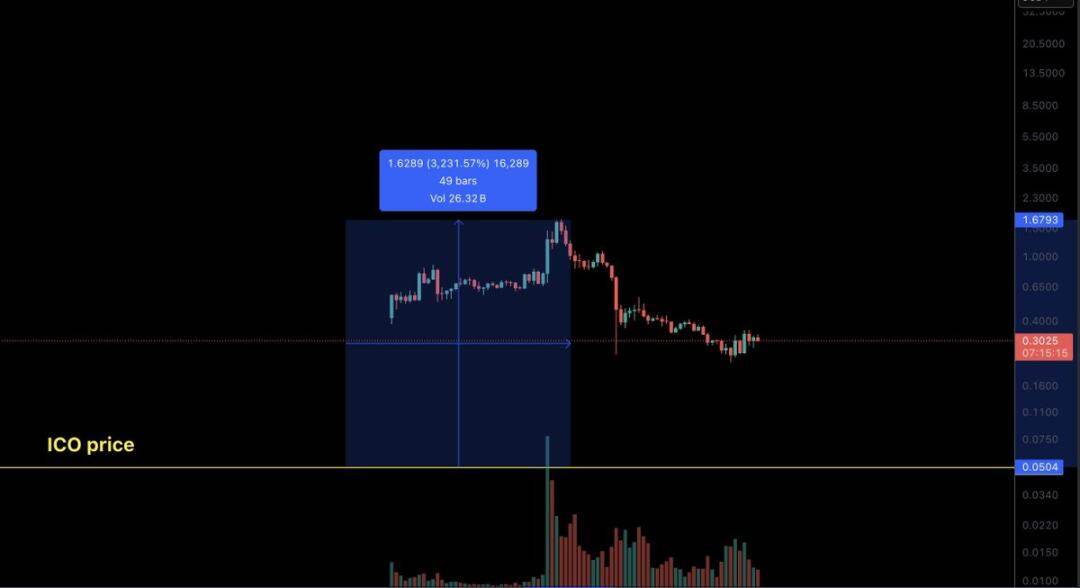Original translation by: Saoirse, Foresight News
Editor’s Note: Public offering is a broad concept of raising funds from the public, and ICO is one form of it, with public sale being a key component. This article focuses on how public sale, as a method of public offering, has emerged and replaced airdrop as the mainstream method of token issuance, analyzing its advantages, case studies, and market impact.
Once upon a time, airdrops were the preferred method for token generation activities (TGE). Projects distributed large amounts of free tokens to users, hoping to cultivate a group of loyal holders and promoters. For a time, this method did work. The allure of “free tokens” created a viral hype cycle—Discord was buzzing, posts on the X platform kept generating buzz, and users flocked to deposit Total Value Locked (TVL) into untested smart contracts, all in the hopes of earning a little extra profit.
However, there’s no such thing as a free lunch. एयरड्रॉप farming became increasingly sophisticated, and “Sycophant attackers” (users who obtained extra tokens by forging identities) gained notoriety. एयरड्रॉपs ultimately became “liquidity exit tools” during TGE—arbitrageurs sold the free tokens to investors who bought in on the first day. Project teams then realized they weren’t building a community at all, but rather “feeding locusts” (implying that arbitrageurs only plundered profits without contributing to the community).

New Trends in Public ICOs
Instead of airdropping tokens to the public, project teams have found a new method. They discovered that by offering seemingly “generous” high valuations, they can raise more funds from retail investors and funds. What’s the new rhetoric? “We’re giving you the opportunity to buy in early—almost like it’s free!” This model provides the same “dopamine rush” as airdrops, only with an added “payment threshold,” packaged under the guise of “fair issuance.”
Theoretically, this model makes sense. People tend to value what they pay for more, driven by psychological factors such as the “endowment effect” (a psychological concept that refers to the increased valuation of something after ownership). Therefore, theoretically, users wouldn’t sell their tokens on the first day of TGE. Furthermore, this “generous ICO” allows project teams to raise more funds for their treasury, rather than simply giving away tokens for free. In return, retail investors at least get to participate in a relatively liquid transaction with a high probability of profit.
Case
PUMP raised approximately $600 million at a valuation of $4 billion. Although the token price subsequently declined, it still maintained a trading volume of approximately $4.4 billion, and pre-sale participants did indeed have the opportunity to sell their tokens at a 75% profit during TGE.

XPL launched a liquidity mining campaign, allowing investors to enter with a fully diluted valuation (FDV) of $500 million, raising a total of $50 million. Somehow, when the क्रिप्टोcurrency community enthusiastically chased the token, pushing its FDV to $16 billion, investors reaped extremely high returns. Even after the token price subsequently fell, pre-sale participants still earned approximately 6x their initial investment.

भविष्य का दृष्टिकोण
Currently, prior to TGE, there are two highly anticipated ICO projects: MegaETH and Monad. MegaETH raised approximately $50 million through a FDV of $900 million to $999 million; Monad plans to raise nearly $200 million through a FDV of $2.5 billion. It’s worth noting that neither project has launched its product yet.
While there are no absolutely risk-free deals, the market generally considers these public sales to be “good deals.” This view is reflected in the market reaction—MegaETH’s fundraising subscription was oversubscribed by 27.8 times.

But here’s the question: where does the money come from? The answer is everyone who bought these tokens during TGE (the logic behind the airdrop is the same). As long as people blindly chase after these tokens during TGE, it will be a profitable deal for most participants.
I expect this trend to continue, but I’d like to remind everyone of a few points to note. More projects may launch TGEs in this way in the future, but not all projects present good opportunities. As the market becomes more efficient over time, these arbitrage opportunities won’t last forever. Public ICOs are by no means “free money machines.”
Since Coinbase acquired Echo/Sonar (project name), the future BASE token will most likely be launched through an ICO rather than an airdrop.
Furthermore, this new trend may create headwinds for the entire altcoin market. The “marginal buyers” (those who ultimately decide to purchase and influence market supply and demand) of these ICOs are mostly existing altcoin holders. As more funds flow into ICOs, the liquidity supporting high FDV “fantasy projects” (projects with only concepts and no actual products or implementation capabilities) will decrease. Many such projects already encountered setbacks on October 10th, and future “player versus player” (PvP) competition in the market will only intensify.

(Note: Taiki Maeda believes the cryptocurrency market will experience a K-shaped recovery in the future, with Bitcoin and tokens with buybacks belonging to the recovery sector, while overvalued infrastructure, projects with unlocking pressure, and junk projects will decline.)
In the future, the gap between high-quality and low-quality tokens may continue to widen. टोकनs with a currency premium (referring to intrinsic value) and strong cash flow will perform better, while tokens solely supported by narratives or hype will underperform. Please manage your funds carefully.
यह लेख इंटरनेट से लिया गया है: TGE Survival Game: Airdrops are dead, ICOs should rise?Recommended Articles
Some thoughts on the future of on-chain finance, written after the sharp market fluctuations on October 11, 2025 Opening: Let’s start with a simple question On October 11, 2025, the crypto market experienced its largest margin call in history. If you’re following this space, you might ask: Does this volatility mean the blockchain experiment has failed? The answer is definitely no. But I’d like to ask you to think about it from another perspective: In this extreme stress test, which systems collapsed? Which survived? Which were questioned? And more importantly, which systems emerged stronger? Let me first introduce my background. I’m the founder of BitMart, and I’ve been in the blockchain industry since 2013. Over the past nearly 13 years, our platform has processed trillions of dollars in transactions and…







